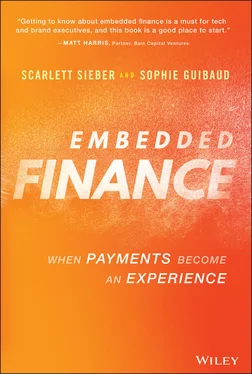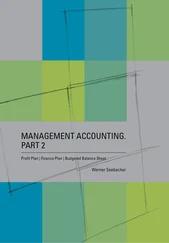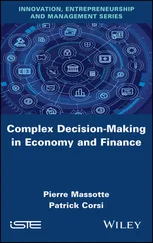The Future: Predicting how the momentum of embedded finance will pick up, what the world of the future will look like, and what the impact on the consumer could be both for individuals as well as society as a whole.
Failing to prepare for, and at minimum be aware of, this monumental shift in how financial products are delivered to customers could lead to serious challenges down the road. The challenges have the ability to impact your talent, revenue, technology you use, and more. This is not the first push toward a new technological world order and we are not far from the days of Kodak failing to seize the digital picture boulevard or Best Buy failing to capture the future of cinematic entertainment. Not everyone should partake in such a journey but, regardless of your ambitions, it is important to understand what is happening at the macroeconomic level as the impact will reverberate into all parts of business. Taking your strategic career hat off and acting as a consumer like everyone else, as a consumer, this book will prepare you for the seismic changes you are about to experience in your day-to-day life.
After all, with a projected $3.6 trillion global market capitalization by 2030, why wouldn't you want to know more? 2 Let the journey begin.
1 1. https://www.lendingtree.com/tree-news/holiday-shopping-behavior/Accessed January 25, 2022.
2 2. https://www.forbes.com/sites/matthewharris/2019/11/22/fintech-the-fourth-platformpart-two/?sh=45ed1e6f5be6Accessed January 29, 2022.
CHAPTER TWO THE ORIGINS OF EMBEDDED FINANCE
How big of an opportunity is embedded finance? We will answer this question throughout the book, but before we talk about where we are now and where we are going in the future, we must start with the past.
HOW WE GOT HERE: BANKING IN REVIEW
Let's begin our journey by going back to the beginning of financial technology— fintech. Some industry experts say fintech began in the 1950s when the first credit cards were mailed to 60,000 consumers in Fresno, California. Others point to the widespread adoption of ATMs in the 1970s. Still others look much farther back, all the way to the telegraph system used to transmit financial orders in the nineteenth century.
But the very earliest instance of “financial technology” may be even older than that. Cuneiform is a system of writing developed more than 5,000 years ago in Mesopotamia, what is now Iraq and Kuwait. It was here, and in a few other areas such as Egypt, India, and China, that agriculture developed to a point where dependable harvests could provide food for urban developments, which served as centers of commerce and other forms of specialized labor. On clay tablets unearthed in the Middle East, archeologists have discovered a system of accounting in cuneiform, including loans and credits to farmers for the purchase of seeds, land, and equipment. It may be said without exaggeration that financial services accompanied the very earliest flowering of civilization.
Note that this is well before coins or cash or fiat money. This was an age of barter, of goods themselves being the means of transaction, rather than abstract symbols of value. The first coins seem to have appeared 3,000 years ago in China and a few hundred years later in Turkey. Both were advanced, literate societies with established social norms and laws protecting persons and property. But the act of borrowing and lending is more fundamental to human activity than the idea of “money,” as any child on the playground can tell you.
Lending appears to have been a family matter in ancient Mesopotamia, with wealthy families lending from their own reserves. In ancient Greece and Rome, banking became more formal and less personal, with lending and money-changing often tied to the economic activities of powerful entities such as temples or government offices.
The institutions we recognize today as banks originated in Italy during the Middle Ages. Banking groups would finance voyages, gambling that ships would return to port with more valuable cargo than they shipped out. In Renaissance Italy, banking became available to more of the population, what we would today call retail or consumer banking. The word bank comes from the Latin bancus , meaning bench or table. Bankers ( banchieri ) set up tables outdoors, at the entrance to markets, to help customers solve liquidity problems. They changed currency, operated as pawnbrokers, and made loans to people visiting the market. Wall Street brokers began much the same way, trading securities at tables along the tree-lined streets of lower Manhattan, when commerce was still an out-of-doors activity.
The consumer banking most of us are familiar with arrived in Europe and North America in the nineteenth century, along with industrialization and the emergence of the middle class. And of course, the twentieth century saw the trappings of traditional financial life become standardized: the checkbook, the bills arriving like clockwork every month, the plastic cards, and the bankers in their suits and ties.
Financial services companies have always been one of the most avid and enthusiastic adopters of whatever new technology is available. We already mentioned the telegraph. Banks were also early adopters of computers, the first to bring computing power to their employees—after all, banks have a lot to compute. Today the idea of banks being tech-forward may seem antiquated, because banks typically seem to be behind the times when compared with technology companies, but a look at the technology budgets of the largest banks shows that bankers’ enthusiasm for technology remains strong. For example, JP Morgan Chase, the largest retail bank in the US, budgeted an astonishing $12 billion for technology in 2022. 1
What has changed is that technology is moving more quickly than banks’ internal processes, and banks must play catch-up. Mobile technology was taken up enthusiastically in the private world, by consumers, before it saw widespread use cases in business (beyond reaching employees at off-hours). This is in contrast to desktop computers, which first saw adoption in business offices before they became known as “home computers.” This gap, along with the stringent regulations banks have followed since the crash of 1929, and later 2008, has created an enormous opportunity for technology companies to enter financial services.
The intersection of banking and technology, or financial technology now commonly known as fintech, began in the internet era. It got its start with digital banking over dial-up internet connections in the 1990s, the arrival of application programming interfaces (APIs) as a communication tool between applications in the 2000s, and truly came into its own in 2009, as the financial crisis wreaked havoc on consumer credit and the entire business of banking. Why was this the moment? The 2009 financial crisis meant that traditional banks became subject to new regulations stemming from repeated crises, and at the same time millions of smartphones (the first iPhone was released in the summer of 2007) found their way into consumers’ hands. This created a unique confluence of circumstances for the new wave of fintech companies to emerge and challenge the banks.
Fintech relies on a number of technology layers from a multitude of providers whose interactions can be quite complex, but consumers don't care how all the processes work together on the backend. Very few users know about the financial systems and programming languages used to deliver services to their touchscreens. An important point about fintech is that, whenever possible, it is automated, and performed with minimal human intervention, removing friction as far as possible to complete any desired action. However, when human intervention is needed, fintechs offer this service, and often more seamlessly than the banks because they focus on providing the best possible customer experience.
Читать дальше












